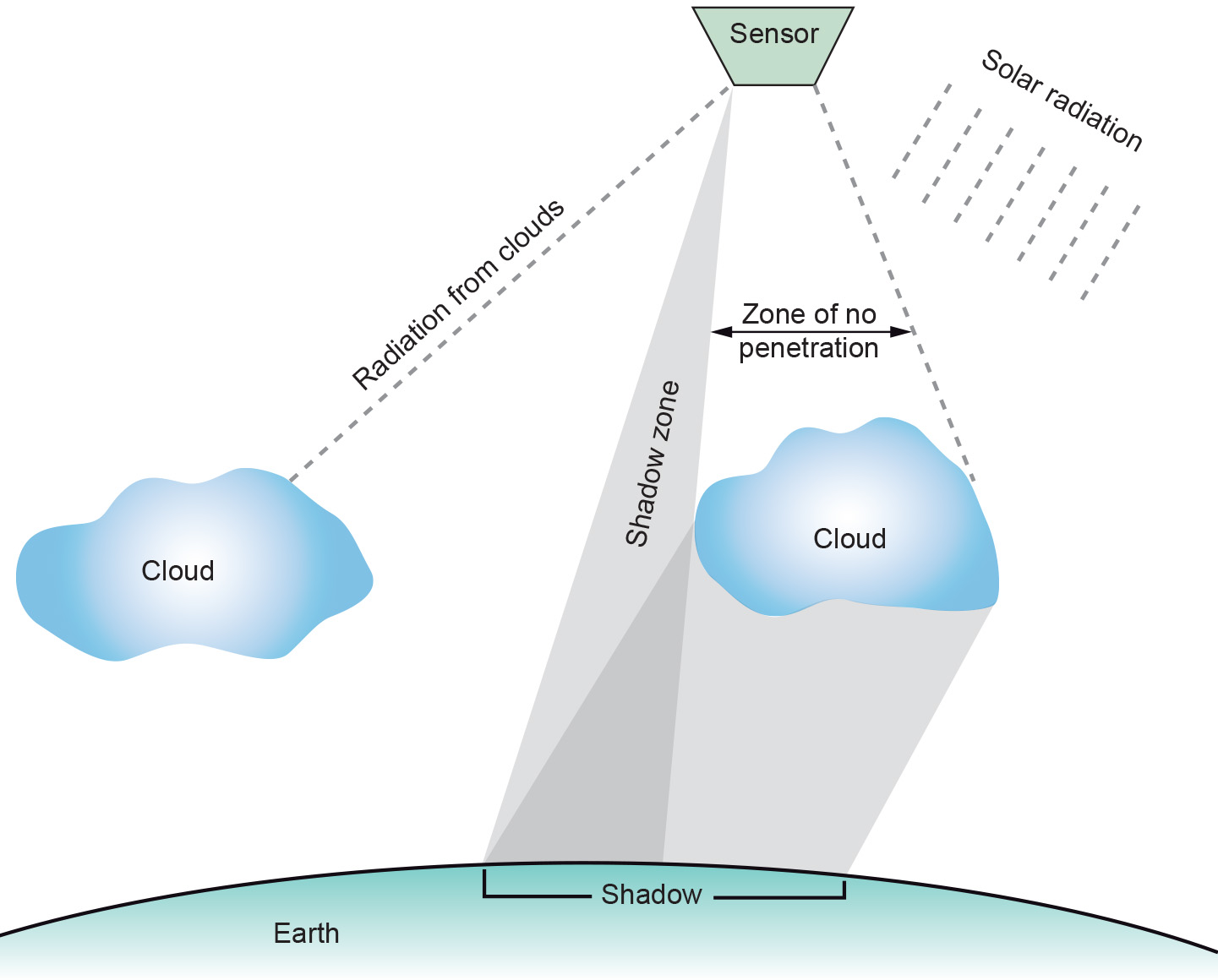Atmospheric Scattering
The process of particles or gaseous molecules present in the atmosphere redirecting EM radiation from its original path.
Introduction
Atmospheric scattering occurs when particles or gaseous molecules present in the atmosphere cause EM radiation to be redirected from its original path. The amount of scattering depends on several factors, including the wavelength of the radiation in relation to the size of particles and gas molecules, the amount of particles and gases, and the distance the radiation travels through the atmosphere. On a clear day the colours are bright and crisp, and approximately 95% of the sunlight detected by our eyes, or a comparable remote sensor, is radiation reflected from objects; 5% is light scattered in the atmosphere. On a cloudy or hazy day, colours are faint and most of the radiation received by our eyes is scattered light. We may distinguish three types of scattering according to the size of particles in the atmosphere causing it. Each has a different relevance to RS.
Explanation
Rayleigh scattering dominates where electromagnetic radiation interacts with particles that are smaller than the wavelengths of light. Examples of such particles are tiny specks of dust and molecules of nitrogen (NO2) and oxygen (O2). Light of shorter wavelengths (e.g. blue) is scattered more than light of longer wavelengths (e.g. red); see Figure 1.

In the absence of particles and scattering, the sky would appear black. During the day, solar radiation travels the shortest distance through the atmosphere; Rayleigh scattering causes a clear sky to be observed as blue. At sunrise and sunset, the sunlight travels a longer distance through the Earth’s atmosphere before reaching the surface. All the radiation of shorter wavelengths is scattered after some distance and only the longer wavelengths reach the Earth’s surface. As a result we do not see a blue but an orange or red sky (Figure 2).

Rayleigh scattering disturbs RS in the visible spectral range from high altitudes. It causes a distortion of the spectral characteristics of the reflected light as compared to measurements taken on the ground: due to Rayleigh scattering, the shorter wavelengths are overestimated. This accounts for the blueness of colour photos taken from high altitudes. In general, Rayleigh scattering diminishes the “crispness” of photos and thus reduces their interpretability. Similarly, Rayleigh scattering has a negative effect on digital classification using data from multispectral sensors.
Mie scattering occurs when the wavelength of EM radiation is similar in size to particles in the atmosphere. The most important cause of Mie scattering is the presence of aerosols: a mixture of gases, water vapour and dust. Mie scattering is generally restricted to the lower atmosphere, where larger particles are more abundant, and it dominates under overcast, cloudy conditions. Mie scattering influences the spectral range from the near-UV up to mid-IR range and has a greater effect on radiation of longer wavelengths than Rayleigh scattering.
Non-selective scattering occurs when particle sizes are much larger than the radiation wavelength. Typical particles responsible for this effect are water droplets and larger dust particles. Non-selective scattering is independent of the wavelength within the optical range. The most prominent example of non-selective scattering is that we see clouds as white bodies. A cloud consists of water droplets; since they scatter light of every wavelength equally, a cloud appears white. A remote sensor like our eye cannot “see through” clouds. Moreover, clouds have a further limiting effect on optical RS: clouds cast shadows (Figure 3).

Outgoing relations
- Atmospheric Scattering is related to Aerial survey
- Atmospheric Scattering is related to Scanner